In today's entertainment-centric world, users no longer settle for just functionality or even beautiful interfaces and smooth interactions. If you're familiar with Maslow's hierarchy of needs, you'll see that today people's focus is increasingly shifting towards emotional experiences and self-actualization.
This is where gamification comes into play. Gamification creates interactive, game-like scenarios that engage users. This involves designing a series of connected touchpoints or moments when the user interacts with the service. It encourages users to achieve goals through their own efforts, whether it's earning rewards, leveling up, gaining social recognition, or personal growth. As users continuously challenge themselves and reach new milestones, they enjoy peak moments of accomplishment, and significantly increase user experience and engagement.
Today, let's explore the magic world of gamification in UI/UX design. Also try to explore your gamification UI/UX design ideas fast with our interface design tool.
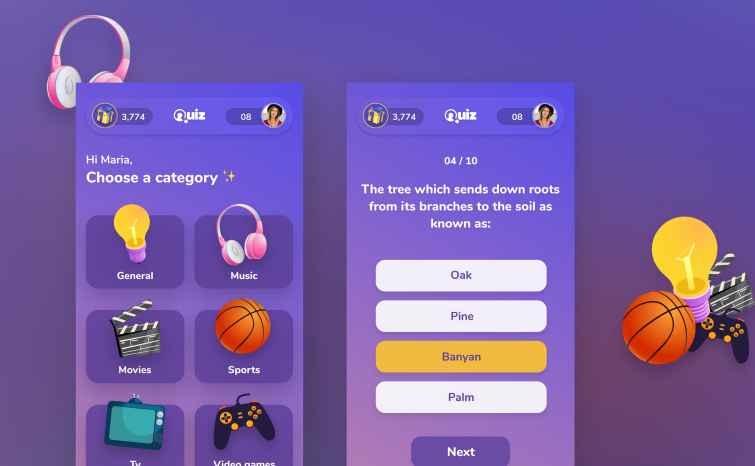
Yu-kai Chou, an author and an international keynote speaker on gamification and the original creator of the gamification framework called Octalysis, has defined gamification as:
“Gamification is the craft of deriving all the fun and addictive elements found in games and applying them to real-world or productive activities. This is what I call “Human-Focused Design” as opposed to “Function-Focused Design.” It is a design process that optimizes the human in the system, as opposed to the pure efficiency of the system.”

Although gamification is a sophisticated design technique that involves integrating various gaming elements into interactive interface mechanisms, its aim isn't to fully transform products or services into games, but to evoke a sense of immersion akin to gaming.
As we know, games have the amazing ability to keep people engaged for a long time, build relationships and trust between people, and develop their creative potential. By incorporating game elements and mechanics into non-game contexts, such as mobile apps or websites, gamification motivates users to reach goals and earn rewards, and consequently boosts user engagement.
Examples of gamification in UI/UX design include fitness apps that reward users with badges for reaching milestones, language learning apps that use streaks to encourage daily practice, or e-commerce sites that offer points and discounts for frequent purchases. Even in education, gamified platforms can turn studying into an interactive experience, making it more enjoyable and rewarding.
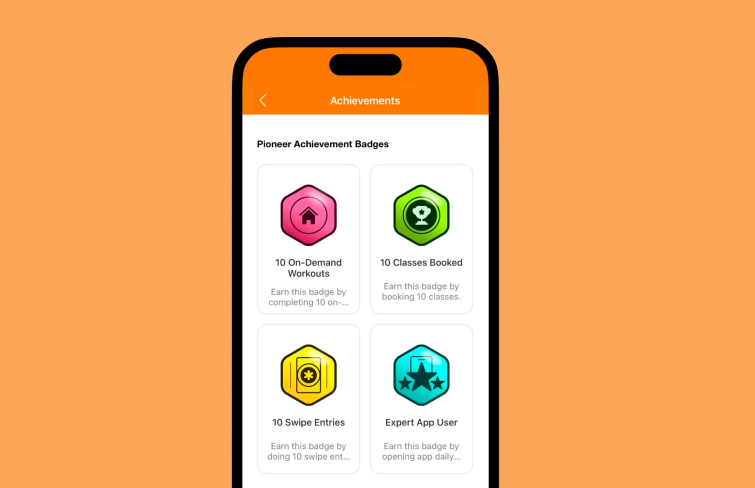
Gamification is a relatively new technique that is quickly proving its effectiveness as a design method in recent years. Its popularity is rapidly growing, and it has the potential to become a leading design approach in the near future. Incorporating gamification into your design strategy could be crucial for maintaining user interest and boosting engagement. But why is it?
Firstly, gamification adds elements of fun to websites and applications. People enjoy interactive processes filled with challenges, fun, and a competitive spirit similar to video games. These elements set tasks or promise rewards for completion, driving curiosity and excitement, which keeps users engaged and spending more time on the app or website.
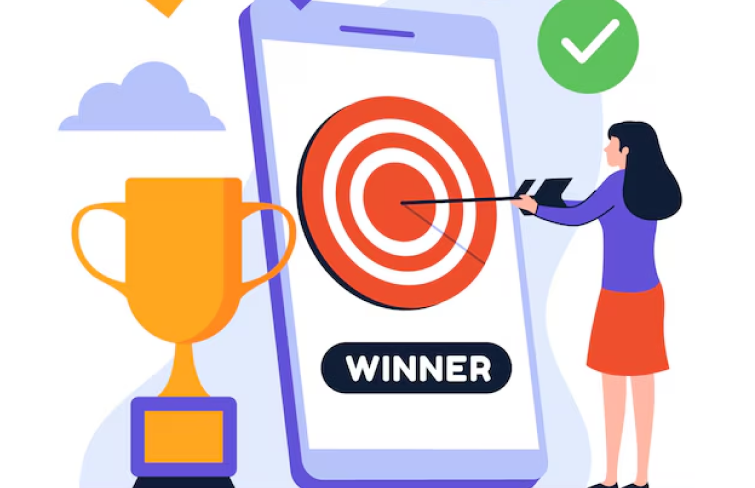
Moreover, gamification has become one of the major design strategies today. Many designers have embraced this trend and are actively applying it across various projects. As a result, users are increasingly familiar with gamified products and start to expect similar experiences from other applications they use.
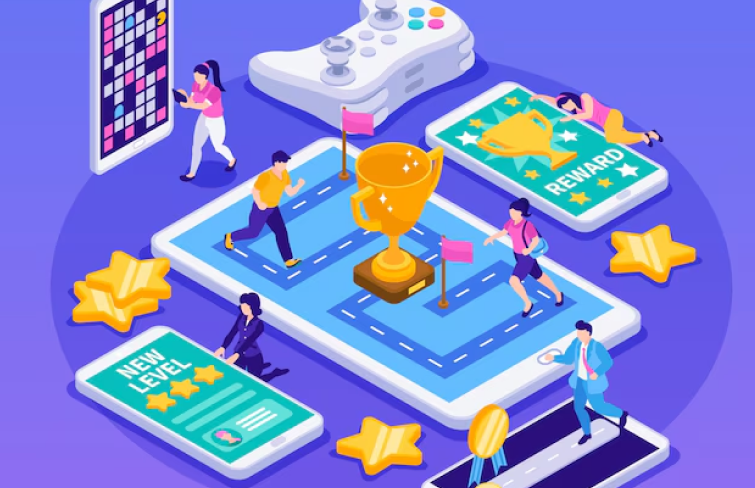
Now, let's explore some common game elements and mechanics in UI/UX design that you might encounter in daily life that enhance user experience.
In gamification, points are rewards granted to users upon completing specific actions. But it serves as more than just markers of progress; they are the essence of the player's journey.
Some points only ascend, serving as constant motivation, such as achievement points earned for completing specific milestones, challenges, or tasks within the game or platform, while others might fluctuate based on user actions, adding dynamism, such as virtual currency within the game or platform, used for purchasing items, upgrades, or unlocking content.

A level system, a common game mechanic employed in gamification, enables users to advance through a sequence of levels or stages as they interact with a game or application. Each level presents fresh challenges or objectives that users must conquer to progress. The significance of a level system in gamification lies in its capacity to inspire users and instill a sense of achievement as they navigate through the levels.
By dividing a larger goal into manageable milestones, users are encouraged to stay engaged and motivated to continue their journey.
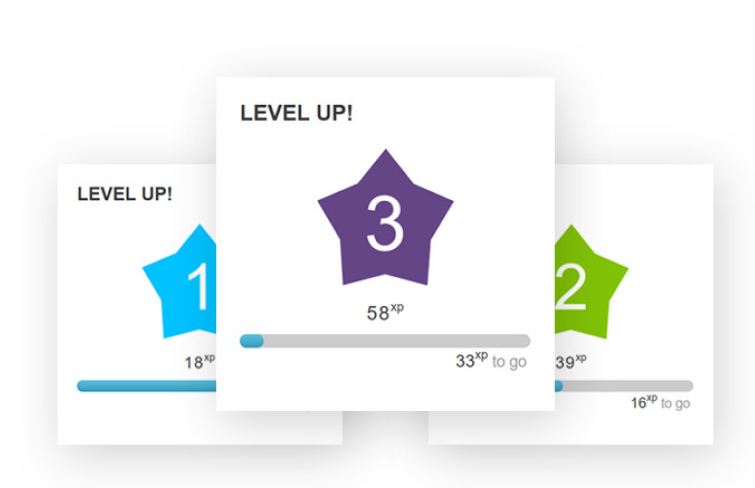
Badges serve as tangible representations of achievements earned by fulfilling specific criteria or bestowed by administrators. When earned, badges are usually showcased in a feed or profile, adding to a player's collection and providing a sense of accomplishment.
Badges fulfill users' need for outward acknowledgment of their achievements and drive participation and engagement, maximizing the potential of initiatives.
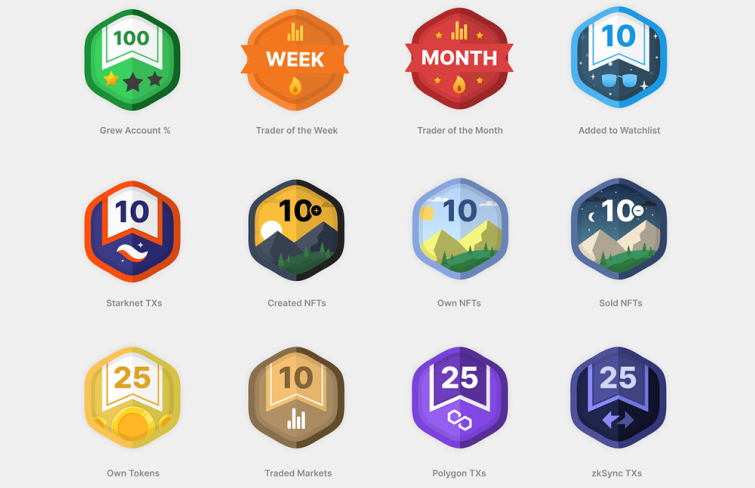
At its core, a leaderboard functions as a list of top scores, ranking players based on their relative success in meeting specific criteria. By doing so, leaderboards effectively highlight the best performers in a given activity, offering a competitive gauge of progress. It serves as a competitive motivator, allowing players to compare their own performance with that of others.
This comparative aspect can drive individuals to strive for improvement and outperform their peers.
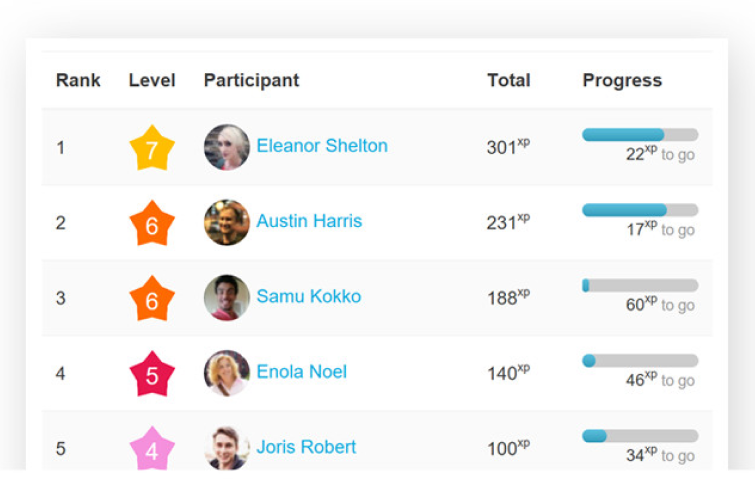
A reward system adds an enticing layer to gamification by offering players the opportunity to exchange accumulated points for tangible or virtual rewards. As players accumulate points and redeem rewards, they experience a sense of progress and accomplishment.
Furthermore, users will be motivated to return regularly in pursuit of these rewards, driving sustained participation and interaction with the platform.
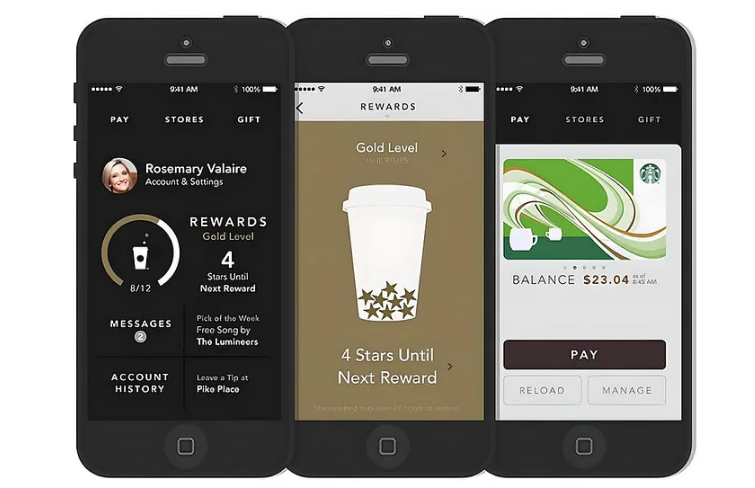
These examples above highlight some of the most common types of game mechanics used in UI/UX design, and there are many more that can be employed to enhance user engagement and experience. For instance, progress bars visually represent a user's advancement toward a goal. Quests or challenges introduce specific tasks or missions that users can complete for rewards, adding an element of adventure and purpose.
Overall, the game must set an objective to be achieved with a notion of competition that drives the action forward.
Gamification is an effective way to boost user engagement in UI/UX design, but it is not without its challenges. Some of the biggest pain points in it include:
One of the primary challenges is seamlessly integrating gamification elements into the core functionality. Poor integration can lead to a disjointed user experience where gamification feels like separate or add-on components than a natural part of the interface. Designers need to carefully consider when and where to incorporate gamified features to ensure they enhance rather than detract from the user's journey.
Adding gamification can complicate the user interface and experience. Overcomplicating the interface with excessive gamified elements can overwhelm and confuse users, detracting them from the primary goals of the application. But it's hard to strike a perfect balance.
Not all users are motivated by the same things. Users have different preferences, motivations, and expectations. Tailoring game elements to a wide range of users can be challenging. To meet the varying preferences and motivations of a diverse user base, designers must conduct extensive user research and segmentation to understand different preferences of users.
Some users may be skeptical or resistant to gamification, perceiving it as a distraction or as a way for companies to manipulate their behavior. This can lead to disengagement or even negative perceptions of the brand or product. This might involve extra development of customization functionalities for users to tailor their experience based on their individual preferences, goals, and skill levels.
If the gamification mechanics are too repetitive or predictable, users may quickly grow bored or fatigued. Designers need to introduce variety and novelty to keep users engaged and interested in the long term.
Gamification elements should be accessible to users of all abilities, including those with disabilities. However, certain gamification features, such as timed challenges or complex puzzles, may pose accessibility barriers for some users, leading to frustration and exclusion.
Gamification often requires collecting user data, raising privacy issues. Designers need to be mindful of these concerns and ensure that gamification strategies are implemented in an ethical and transparent manner, respecting users' autonomy and well-being.
Ok, let's move forward with how to gamify your UI/UX design. Kevin Werbach, the author of For the Win: How Game Thinking Can Revolutionize Your Business, provides a structured 6-D model of gamification process to help designers apply game mechanics to non-game contexts to engage users.

Why are you gamifying? What business benefits or other goals do you aim to achieve? You should clearly identify what you aim to achieve through gamification. These objectives should align with your overall business goals, whether it's increasing user engagement, improving employee productivity, enhancing customer loyalty, or boosting sales. Clear objectives provide direction and a benchmark for measuring success.
What do you want users to do? What metrics will help you measure their actions? Specify the behaviors you want to encourage or discourage among your users. These behaviors should directly contribute to achieving your business objectives. For instance, if the business goal is to increase sales, a target behavior like spending more time on the website may not be appropriate. Therefore, listing target behaviors should come with explanations of how they help achieve the business goals.
Understand who your users are by creating detailed user personas. For example, what noteworthy characteristics do they have that contribute to your business goals? Include any labels that help designers better understand the target audience, such as age, gender, values, personality, and more. Designers should understand which game elements are likely to be effective for these users.
At this step, designers should develop the core mechanics that will drive user engagement. This typically involves two main types of loops: Engagement Loops and Progression Loops.
-Engagement Loops: Encourage users to take action, receive feedback, and repeat the action. For example, a user completes a task, earns points, and is motivated to complete more tasks.
-Progression Loops: Provide a sense of advancement over time, such as leveling up or achieving milestones. This keeps users invested in the long-term journey.
Although it might be a more abstract concept, ensuring the gamification system is fun is equally important. The elements of fun can include competition, social interaction, challenges, and rewards. The fun factor is crucial for maintaining user interest and motivation, making the experience more than just a series of tasks.
By this step, the designer should have a solidified plan for the gamified elements and most details, such as which game elements are involved and what the use experience will be. Based on these details, designers can choose the appropriate tools to better execute their gamification ideas.
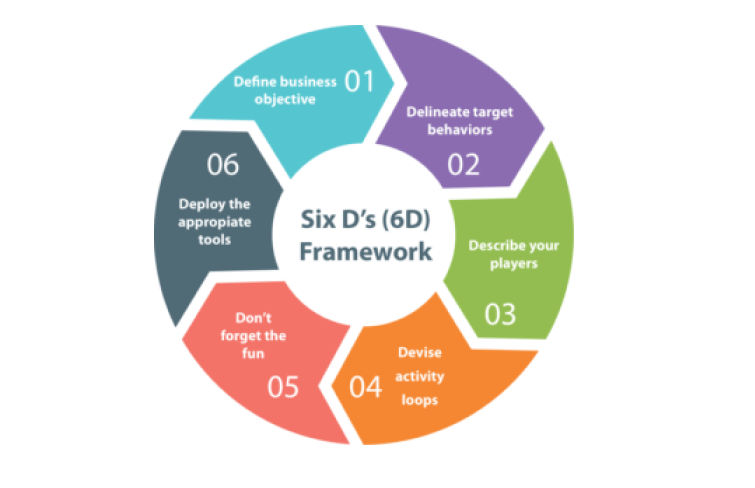
After completing these six steps, designers should review the entire process to ensure the design consistently aligns with business objectives and maintains internal logical coherence.
Starbucks' reward program exemplifies successful gamification in a consumer context. Users earn "stars" for each purchase, which can be redeemed for free food and drinks. The mobile app’s UI is designed to make collecting stars visually appealing and satisfying, adding a fun element to the customer experience. The app also includes an in-app payment method, encouraging users to spend and earn stars seamlessly.
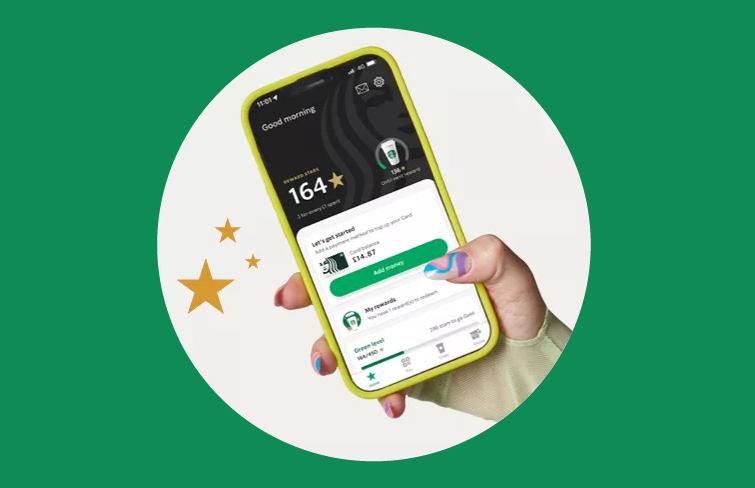
When starting a new language, users can choose from various difficulty levels, tailoring the experience to their needs. The app rewards progress with achievement badges and other incentives, providing a clear sense of advancement and motivation. This combination of customizable difficulty and rewarding progression makes Duolingo an outstanding model of effective gamification in educational apps.
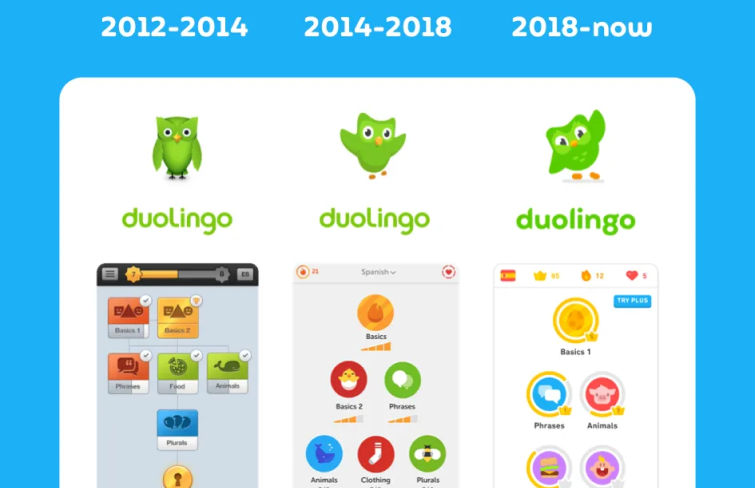
Fitbit incorporates badges, challenges, and social sharing to motivate users to increase physical activity and achieve fitness goals. This strategy has proven successful; in 2014, Fitbit reported that users engaging with its social features were 27% more active than those who didn't, and overall, users took 43% more steps daily than non-users. These gamification elements have significantly contributed to Fitbit’s leadership in the fitness tracking industry.
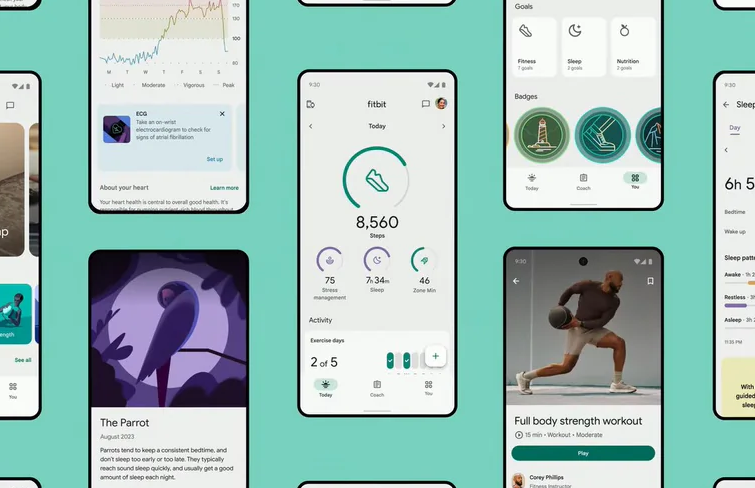
Forest is a standout example of gamification in UI/UX, designed to help users stay focused and combat phone addiction. When users start a task, they plant a virtual tree that grows as long as they remain in the app. If they leave to use their phone for other activities, the tree dies. Over time, users can cultivate an entire forest, making focus and productivity visually engaging and rewarding. This simple yet effective approach transforms maintaining concentration into a game, promoting better productivity habits.
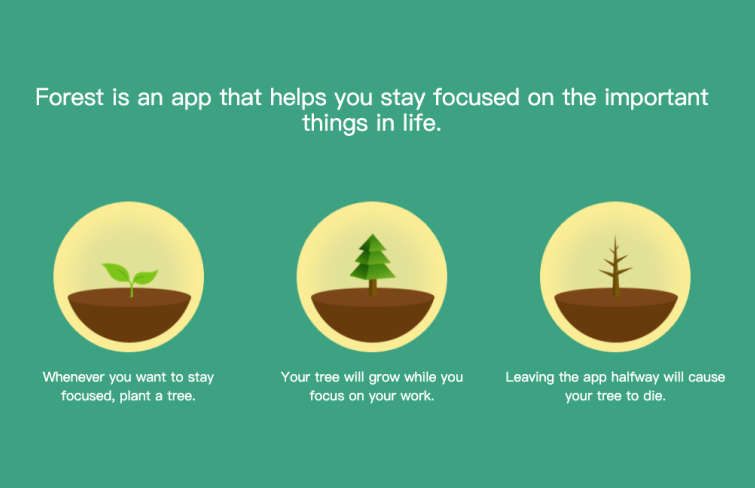
Mint effectively uses gamification to help users manage their finances by visualizing spend tracking with a progress bar. This feature keeps users motivated to achieve their financial goals by providing a clear, visual representation of their daily spending. Progress bars tap into the users' desire for progression and accomplishment, fostering ongoing engagement.
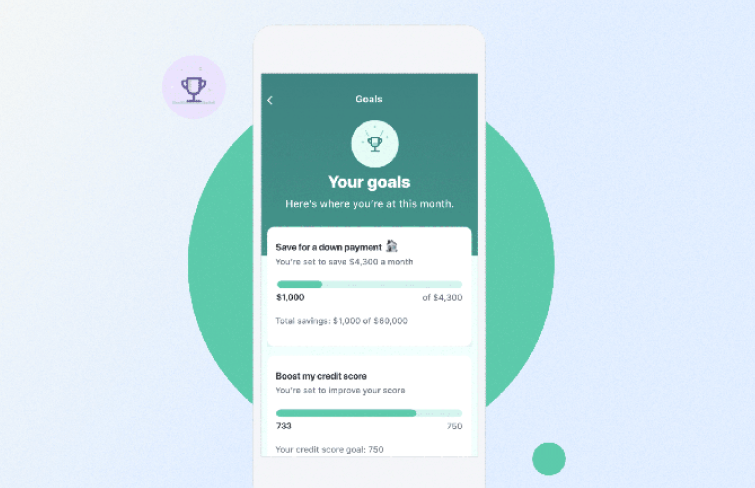
Reddit effectively uses gamification to boost user engagement through its Karma system. Users earn Karma points when their posts and comments receive upvotes, providing feedback on their activity and a sense of progress. This system encourages interaction and participation across various communities, making Reddit a notable example of subtle but effective gamification in UI/UX.

CRED, a prominent player in the Indian fintech sector, effectively utilizes gamification to foster financial responsibility in an engaging manner. Users are incentivized with CRED coins for paying their credit card bills, which can be exchanged for various rewards. Additionally, the platform offers interactive games like "Spin the Wheel," a daily engagement tool that gives users up to 10 chances to win rewards such as bitcoins and gift vouchers. This element generates anticipation and desire by displaying potential rewards and offering transparent odds, making it highly engaging.
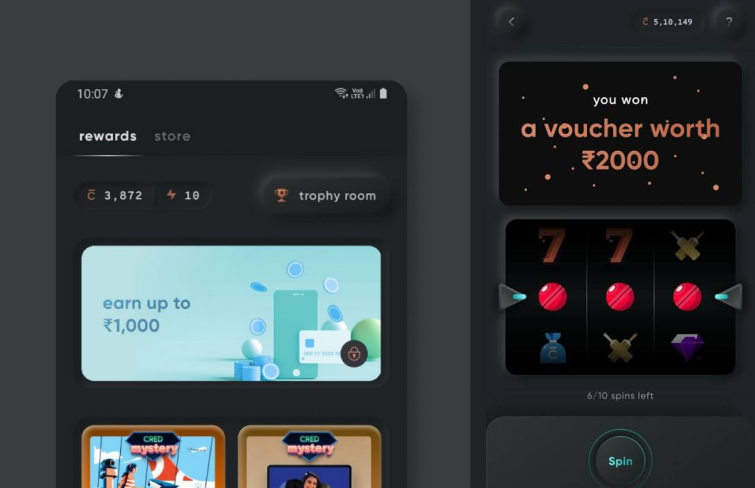
Revolut, a global financial super app, excels in gamification through its points leaderboard system. Users earn points for making transfers and payments, which contribute to a leaderboard tracking their progress against top users and friends. These points can be used to enter a weekly prize draw, with cash prizes ranging from £1 to £10,000 in Revolut's Raffle contest. The leaderboard leverages human competitiveness and the allure of rewards, significantly enhancing user participation and activity within the app.
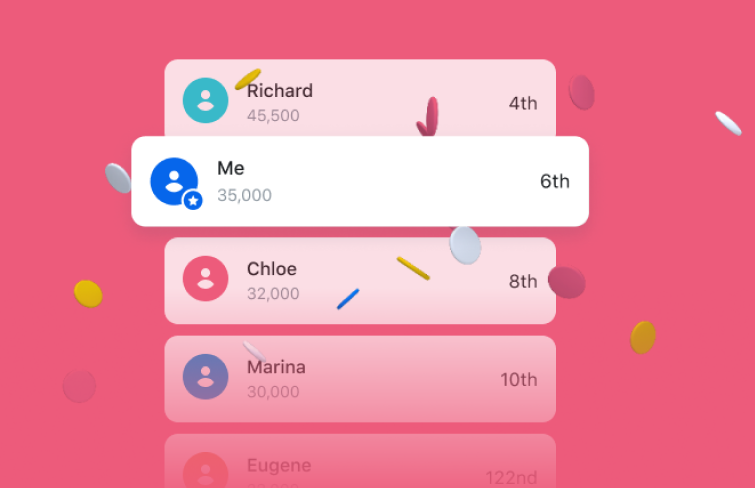
The Apple Watch is a stellar example of gamification in UI/UX, particularly through its fitness tracking features. The iconic "Activity Rings" system provides users with a visual and interactive representation of their daily activity goals, including Move, Exercise, and Stand goals. As users engage in physical activity, the rings gradually close, offering a clear and satisfying depiction of progress. The combination of visual progress tracking, timely motivational prompts, and rewards makes maintaining a fitness routine engaging and enjoyable. This gamified approach to fitness not only incentivizes users to stay active but also transforms the fitness journey into a more interactive and rewarding experience.
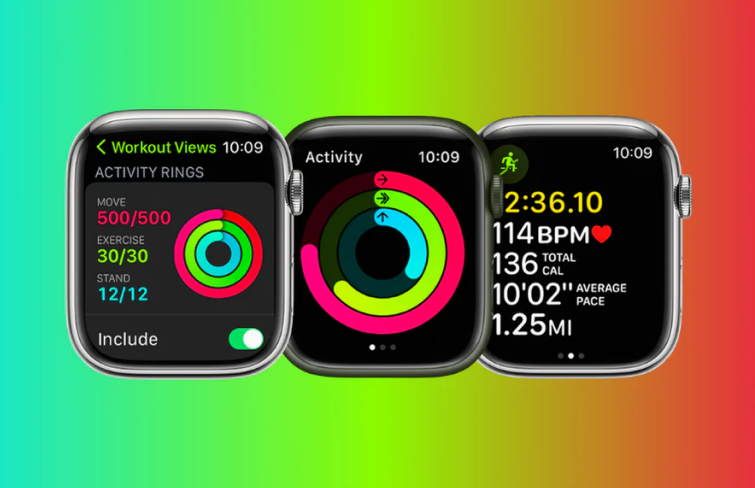
Fortune City is a budget-tracking app designed as a simulation game where users can build and manage a virtual town. The app features a ranking system for friendly competition and awards various badges based on users' achievements. For instance, if you save a significant amount for a specific purpose compared to your friends, you earn the 'Master of Saving' badge. Badges instill a sense of accomplishment and trigger the release of dopamine, a neurotransmitter associated with pleasure, reinforcing positive actions within the app.
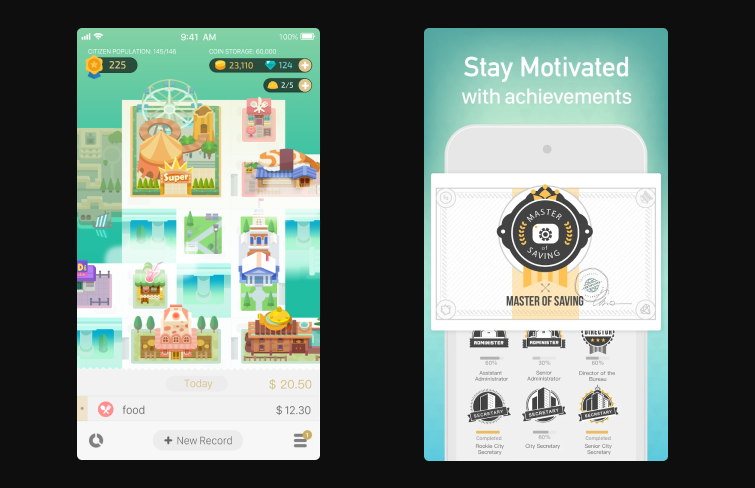
In the past, the functionality-oriented design process prioritized the usability and practicality of products, aiming to efficiently assist users in solving problems. However, it lacks a touch of emotional experience, which gamification precisely fills. Gamification, by influencing people's emotions, turns otherwise dull processes into delightfully engaging experiences.
However, it's important to recognize that gamification is not a one-size-fits-all solution. The effectiveness of gamification depends on the target audience and the nature of the product or service. It's better to carefully evaluate whether gamification aligns with your users' needs and the product’s objectives. Thoughtful implementation ensures that gamification enhances the user experience without becoming a distraction.
 Mockplus RP
Mockplus RP
A free prototyping tool to create wireframes or interactive prototypes in minutes.
 Mockplus DT
Mockplus DT
A free UI design tool to design, animate, collaborate and handoff right in the browser.
